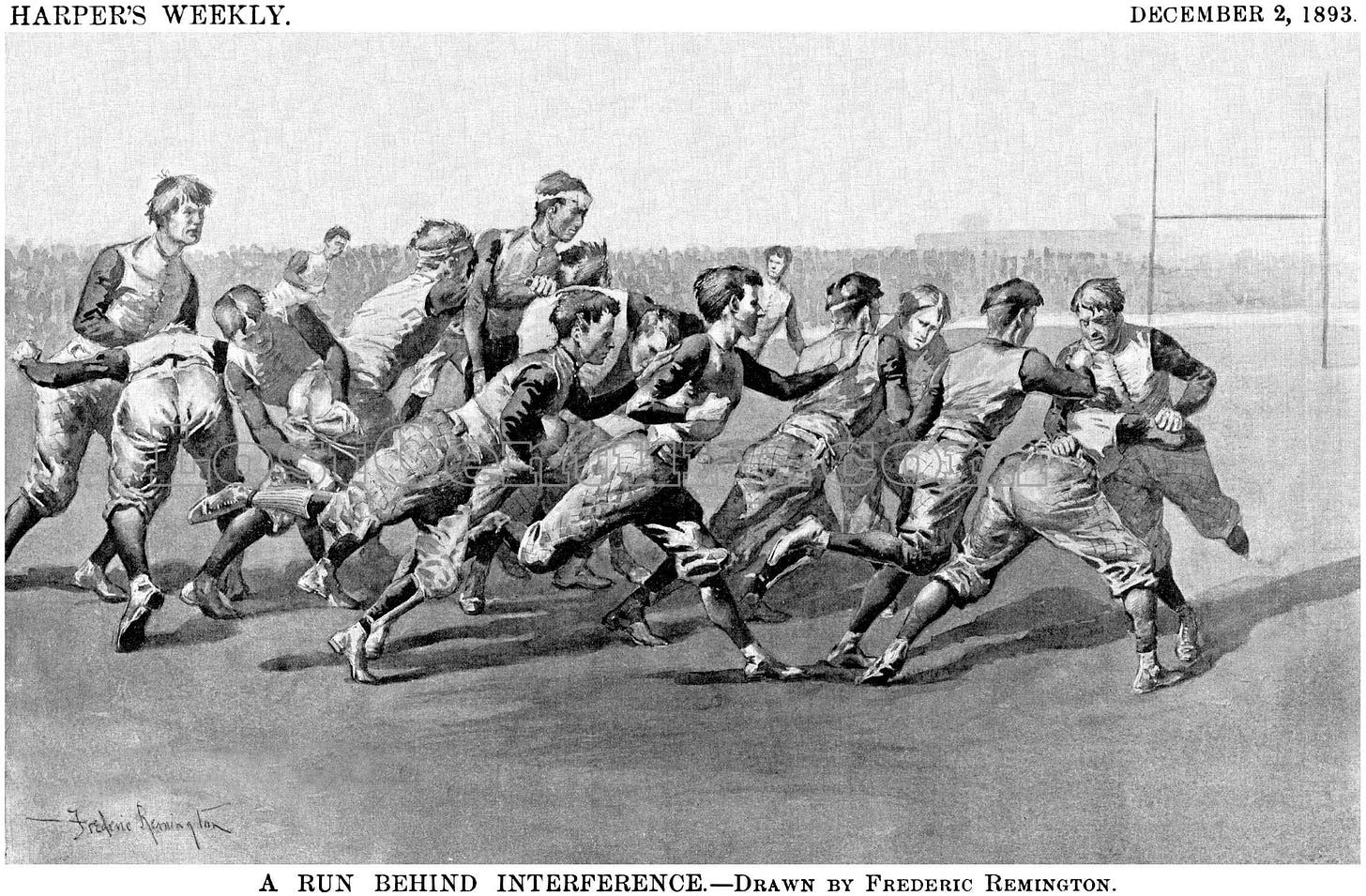Today’s Tidbit… 1876 IFA Rule #22: Onside
This is #22 in a series covering football’s original 61 rules adopted by the Intercollegiate Football Association in 1876. We review one rule each Friday.
The concepts of onside and offside are fundamental to gridiron football, rugby, soccer, and Gaelic football that emerged from a stew of nineteenth-century English games. Each grew from one version or another of those games before taking its shape due to preferences and political or geographic separation.
The rugby version of the kicking game and its offspring -Canadian rugby and American football- shared the same or highly similar rule books in the mid-to-late 1870s, including their concept of onside. The IFA version said:
Rule 22: Every player is on side, but is put off side if he enters a scrummage from his opponents' side; or, being in a scrummage, gets in front of the ball, or when that ball has been kicked, touched, or is being run with by one of his own side behind him (i.e., between himself and his goal-line). No player can be off side in his own goal.
In short, players in a scrimmage must stay on their side of the ball until the ball leaves the scrimmage and then cannot be in front of a teammate controlling the ball. The first part of the rule is consistent with the current requirement for players to be behind their scrimmage line at the snap, while the second element disappeared from the gridiron in stages. Sanctioned violations of the original onside rule are a primary difference between gridiron football and other kicking games.
Like rugby, early football players on the scrimmage line were offside once the ball was snapped back behind them. Being offside, they could not legally block their opponents as much as shield them, like a basketball player setting a pick.
However, in 1884, teammates began running alongside the ball carrier, warding or interfering with potential tacklers. Soon after, they began running in front of the ball carrier; the tactic was not penalized, and what we now call blocking became embedded in gridiron rules. To make up for allowing offensive players to block, the rules forbid them from using their hands when blocking.

Nevertheless, the onside concept remained central to other aspects of the game. The quarterback kick and the onside kick from scrimmage of pre-1920s football, which precipitated the roughing the punter penalty, reflected the continued application of the onside concept in football.
Finally, while what we now call laterals and handoffs fit within the onside concept while throwing a pass to a teammate closer to the opponent's goal than the passer violates the onside rule. So, two of gridiron football’s defining elements today -blocking and forward passing- represent fundamental violations of the game’s original onside rule.
For previous stories in the series, click the link for each rule: Intro | #1 Drop Kick | #2 Place Kick | #3 Punt | #4 Goal Posts | #5 Goal | #6 Goal ≠ Punt | #7: Scoring | #8: Dead Ball | #9: Touchdown | #10: Tackle | #11: Scrimmage | #12: Ball Handling | #13 Dead Ball | #14: Scrimmage Ball Handling | #15 Run In | #16: Goal Line | #17: Boundary Lines | #18: Crying “Down” | #19: Maul In | #20 Maul in Pax | #21: Touch-in Goal
Football Archaeology is reader-supported. Click here to buy one of my books or otherwise support the site.

